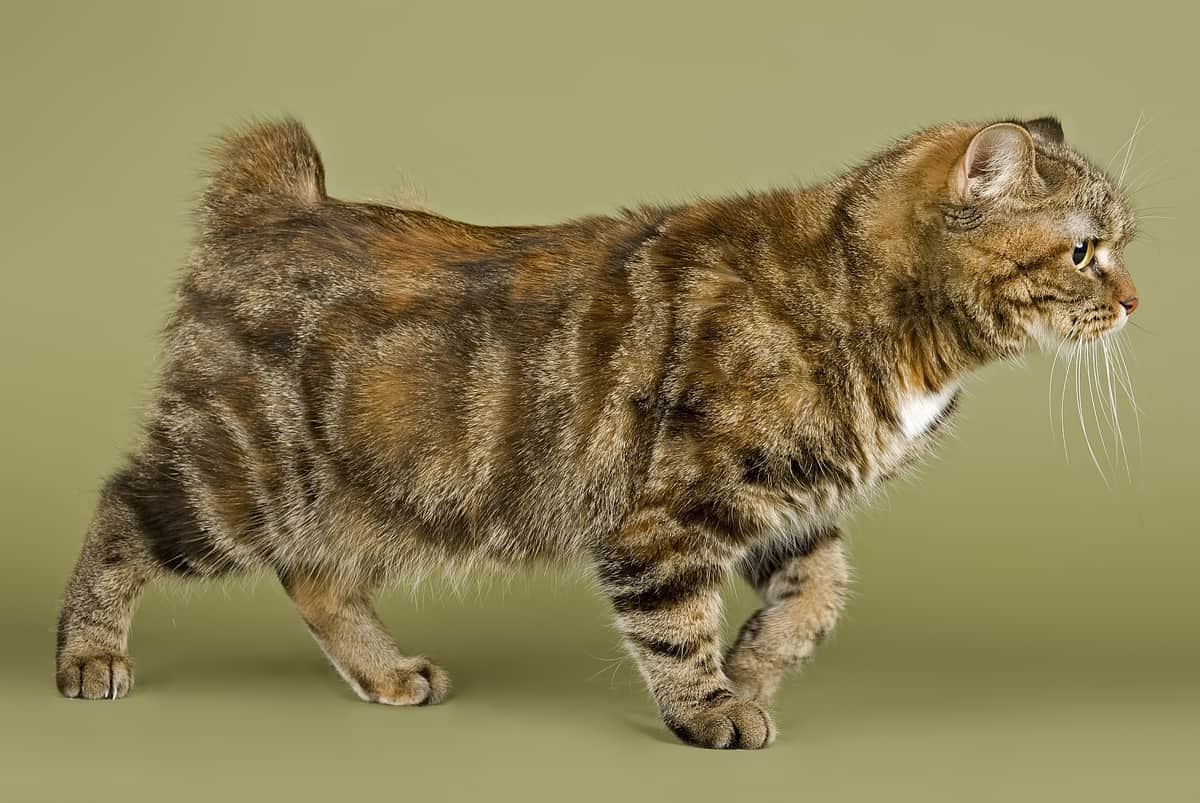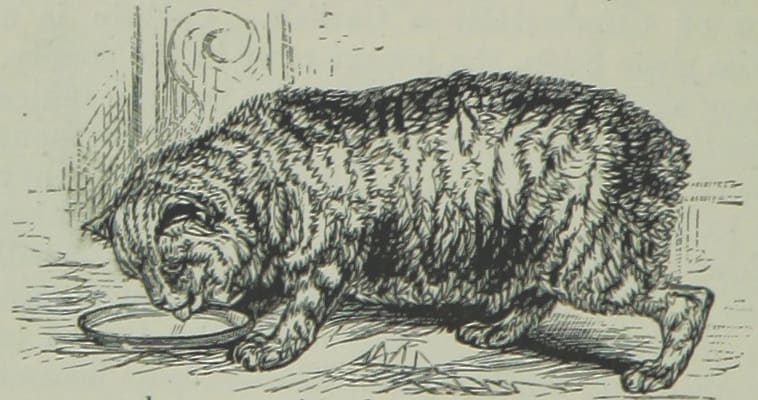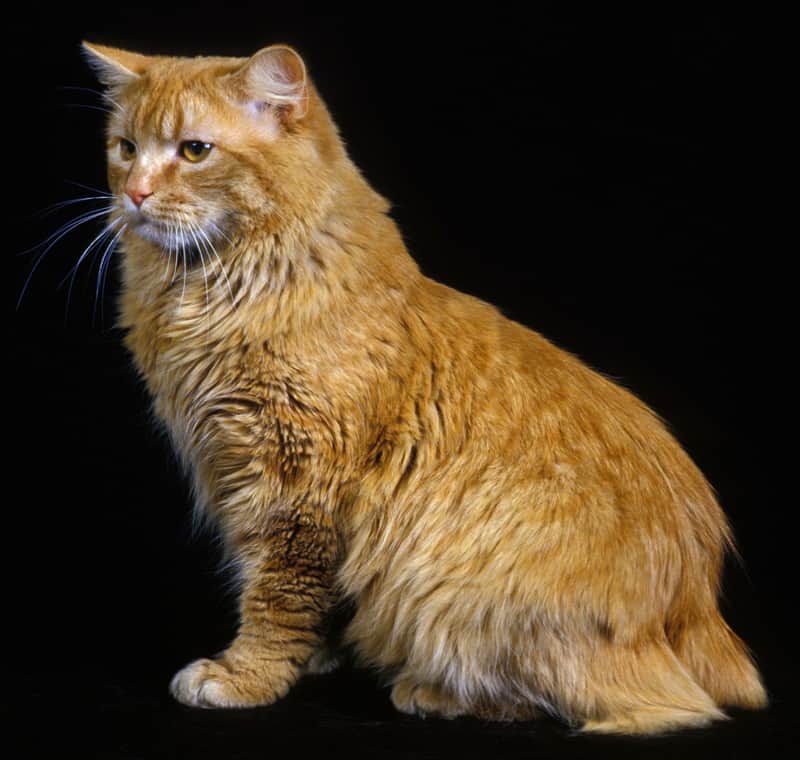The Manx cat is well-known for a variety of characteristics, including having little to no tail.
Let us go over the Manx cat in greater detail and learn some interesting facts about this unusual breed of cat.
Where did Manx cats come from?
The Manx cat originated on the Isle of Man in the Irish Sea. In the Manx language, tailless cat are called stubbin.
Manx cats are descended from the African wildcat (Felis lybica).
One of the most identifiable traits of a Manx cat is the lack of a tail which is caused by a genetic mutation.
The original island cats had short hair, but the Vikings brought the long hair gene when they ruled the island. Because of its intellect and outgoing demeanor, the Manx cat is regarded as a working cat on the Isle of Man.
What do Manx Cats Look Like?
The Manx cat looks similar to the typical house cat but has a few differences, the most prominent of which is the lack of a tail.

For some Manx cats there is a little indentation at the back end where a regular cat’s tail would be. Other types of Manx cats such as the rumpy riser will have a little tail hump.
Aside from the tail, they are small and compact in compared to a typical cat. A Manx cat’s face has is a little rounder and wider.
In Eleonor Bulley’s, she described Manx Cats:
We had a Manx (that is Isle of Man cat) once and very odd she looked without any tail at all We called her Bunny for she looked rather like a rabbit It is a good sort of cat for a nursery for you see there is no tail for the baby to pull and babies are very fond of pulling tails I find and then the cats scratch them.
“Great Britain for Little Britons. A book for children, etc” by Eleanor Bulley, 1881.

The Legend of Why Manx Cats Have No Tail
There is a well-known legend that explains why the Manx cat does not have a tail. According to tradition, the cat’s tail got caught in the closing of the door on Noah’s ark. Another legend suggest that the Manx cat is the result of breeding between a cat and a rabbit.
Four Tail Variations of the Manx Cat
Rumpy is usually the first thing that comes to mind when you think of a Manx cat. However, there are Manx cats with nearly full-length tails.
The Manx cat has four different styles of tails.
- Rumpy: The rumpy lacks a tail and instead has a dimple where the tail should be.
- Rumpy Riser: The rumpy riser has a little bulge that resembles a small tail.
- Stumpy: The stumpy will have a stub of a tail.
- Longy: The longy has an almost full-length tail.
Cymric: The Long-haired Manx Cat
There is also a long-haired Manx (Cymric). They do not, however, have a long tail, only a half one, therefore are not classified a separate breed from the Manx, despite their appearance.
Cymric is classified as a Manx breed due to the fact that they have a half tail. Aside from that, they have long-haired fur, which no other Manx cat has.

Intelligence & Personality Traits of the Manx Cat
The Manx cat is known to be an extremely bright cat, with some of the highest hunting IQs of any domesticated cat. Furthermore, the cat is quite cuddly and non-aggressive.
The fact that these cats are intelligent means that they are exceptionally good at understanding humans. They understand your expressions and commands and, for the most part, listen to you.
They will hunt whatever small game they encounter outside because they are natural hunters. This allows them to follow their instincts, but it can be an issue if you live in an area where there are a lot of squirrels and other small animals.
Because the Manx cat is an exceptional hunter, don’t expect many failed hunts; if they put their mind to it, they will return with a kill.
Aside from having a good hunting IQ, they also like playing a lot. So, if you’re considering about getting a Manx cat, make sure you keep it busy and provide plenty of games for it to play. Manx cats do enjoy being active.
Manx cats are also know for their ability to learn how to open doors.
Because of their affectionate demeanor, they will enjoy cuddling and spending time with their owners. If you are looking for a companion, they are a highly loving cat breed that would make an excellent pet.
The Manx cats are both friendly and intelligent and can make an excellent pet if you have the time for their energy levels. The Manx cat can be trained to be a well-behaved cat, but you must put in the time and effort.
Some Interesting Facts About Manx Cats
While Manx cats aren’t rare, finding an all white Manx cat is.
Manx cats were some of the first cats to be shown. The Cat Fanciers’ Association made the Manx cat one of its founding breeds when it established its first cat show in 1096.
All Manx cats carry the gene for a tail. That means that a tailless mother cat can give birth to kittens with tails.
References
Hankins, J. (2002, November 22). Here endeth the tail. the Guardian. https://www.theguardian.com/lifeandstyle/2002/nov/23/weekend.justinehankins
Manx Cat. (n.d.). The Cat Fanciers’ Association. https://cfa.org/manx/






